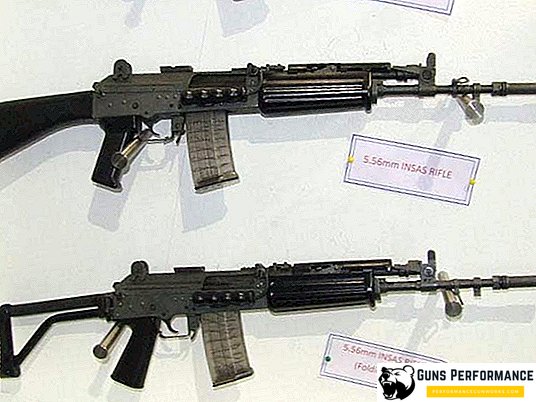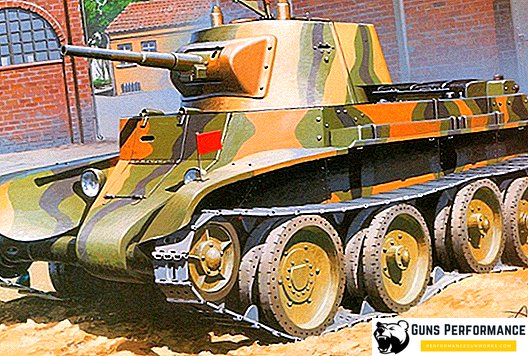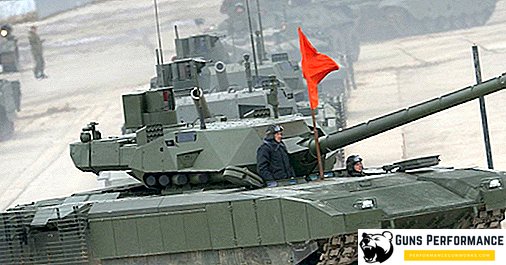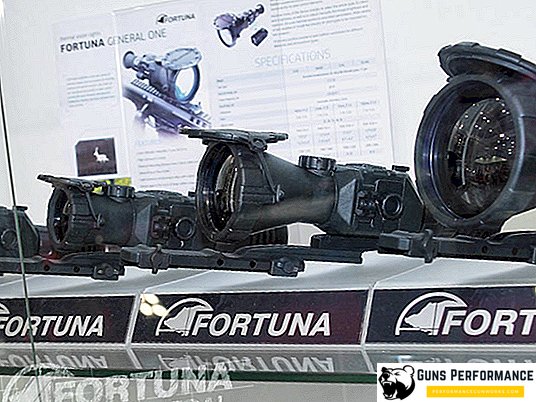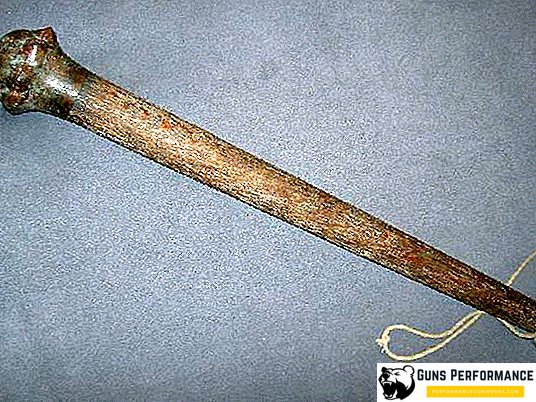
A bludgeon, along with a stone, is the most ancient weapon that has accompanied a person since the Stone Age. Having gone a long way, batons are still used by the police and for self-defense.
Modern technique of possessing a baton, in addition to a variety of strokes, includes a variety of painful and suffocating techniques. During the Middle Ages and earlier, such a technique was not necessary, since the baton’s blows were deadly, and the legislation of those times was not very strict.
Classification of batons and their types
Abroad, modern batons can be divided into two large groups:
- Stick - light batons, more like sticks;
- Club - directly batons.
We have all the batons called or police batons, or just clubs.
In addition, batons are divided by length by:
- Long (larger than 90 centimeters);
- Medium (from 45 to 90 cm);
- Short (from 20 to 45 cm).
The batons used by the police are usually of medium length. In Russia, the most famous is the so-called "baton" (now it is called the "baton"). This rubber truncheon, and our police use several of its variants:
- PR-73 (simple rubber stick);
- PR-73F (distinguished by the presence of a protective guard);
- PR-Tonfa (in the form of Japanese tonfa);
- PR-89 (telescopic baton with a metal handle).
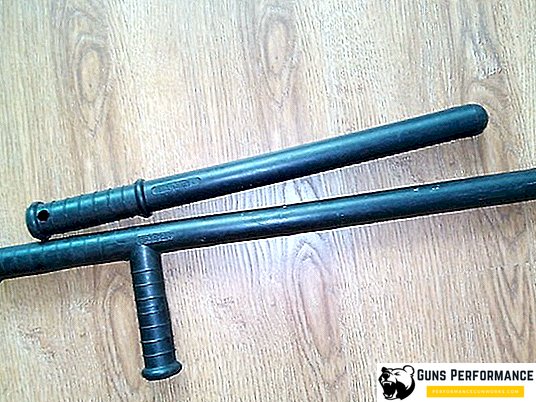
There are still steel batons (as a rule, telescopic). Telescopic baton made of metal is used by the omon. Such a club is compact and more effective than a rubber stick. All models of batons, as a rule, have grooves, to prevent slipping out of hands.
Often batons for the police are equipped with a special loop to prevent the loss of weapons. For the manufacture of loops used genuine leather or synthetic materials.
The spread of police batons in Europe
Although police batons have long been used in the United States and Europe, they came from India. It was there that batons began to be massively used to suppress popular unrest. When, in 1857, the Indian Sikh people gave great help to Britain in suppressing riots, England decided to form a colonial police force. It was there that Sikhs began to use batons en masse. Noticing the effectiveness of this weapon, the British armed them with their own police, although the English police batons were very different from the Indian ones.
The London police were armed with short and thick batons, as the Europeans were far from the traditional Indian martial arts. The baton was made of wood (until the 1930s) and was called the "Billy baton".
American counterparts were longer, which allowed them to be used for a longer distance. Until the 60s of the 20th century, there was no technique for owning a baton. It was used as a regular stick, at best (if a military veteran worked in the department) could teach basic techniques of fencing or bayonet fighting. Most of the time they used a bludgeon like thousands of years ago: they hit him on the head until the criminal stopped resisting. Given the fact that the batons were wooden, it was very traumatic to resist the police.
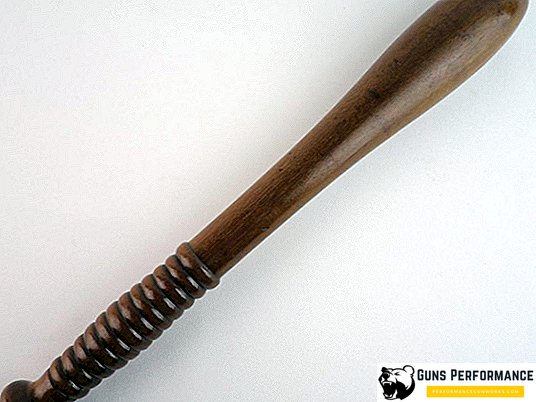
The appearance of Japanese police batons
The ancient Japanese began a very long time to use batons as weapons. Since the peasants were not allowed to use bladed weapons for a long time, the batons were an inexpensive and effective weapon of self-defense.
For a long time, the Japanese police used a jute stick, which was a metal pin with a hook-shaped process. He could be used to capture the opponent's blade and at the same time defended the master’s hand. Often jutte was decorated with inlays and ornaments, since this baton also served as a distinction between Japanese officials.
Although in the literature jute is described as a weapon of non-lethal effect, it is easy to imagine what the blow of a metal baton on the head could lead to. Some Japanese police used these batons until the 1920s.
Since the 1930s, the kaizho stick fighting system was introduced in Japan, which was up to 125 centimeters long. This club was used until 1946, after which it divided the laurels of the championship with a shorter club of keibo.
Since 1961, the Japanese police have used a keibo telescopic baton. This club is compact and allows effective strikes to the enemy. Traditionally for Japan, the art of owning this club includes a huge base of strikes, painful holds and grips with its help. Due to the high trauma, the technique of combat eliminates the blow to the head.
US batons from the 60s of the 20th century
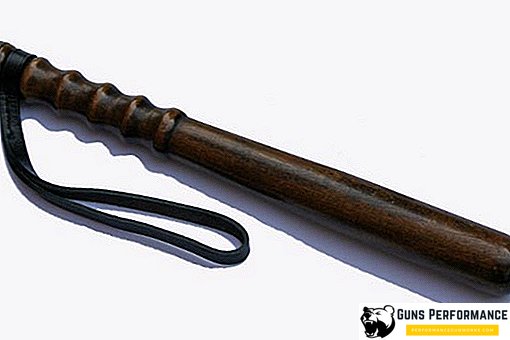
Since 1961, Robert Koga began to teach self-defense techniques for students of the Los Angeles Police Academy. A martial arts master, with more than 20 years of experience in martial arts, Koga took police training to a new level.
Besides the fact that Koga taught the police how to use Aikido and Ju-Jitsu, he introduced a new baton with rounded ends (so that the blows did less damage). This club allowed you to cope with several opponents, as Koga taught the police basic tricks of jo-jutsu (fight with a short stick). Koga's baton length was 66 centimeters, but since the United States police were taller than the slender Japanese, it began to vary from 66 to 74 cm.
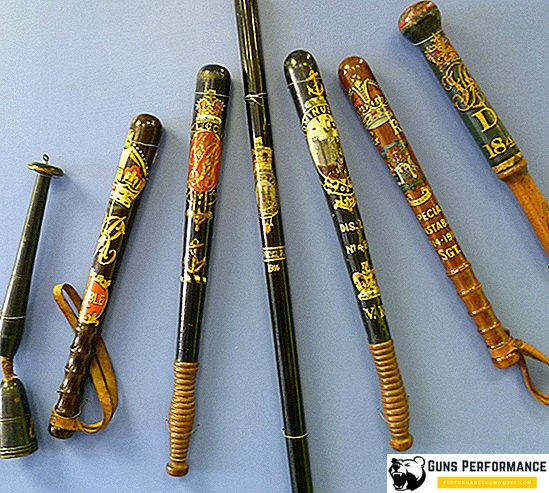
Technique of work with Koga's bludgeon included:
- Sticks stick, very effective in a narrow space and at a minimum distance;
- Blows with a bludgeon included fencing equipment and blows with two hands;
- Various blocks (plus quick whipping and block in one motion);
- Technique knocking the enemy down;
- The technique of escorting the detainee.
The emphasis of the Koga combat system pays great attention to maintaining a safe distance and strikes at certain points on the enemy's body. Since this club is a rather formidable weapon, it was recommended to apply blows to hands and feet.
A policeman who owned this technique could not only effectively defend himself, but also make an arrest without turning the suspect into a bloody mess. After several years of using this system, Koga issued a training manual for teaching police how to fight with his baton (Koga-jutsu).
Tonfa-based baton
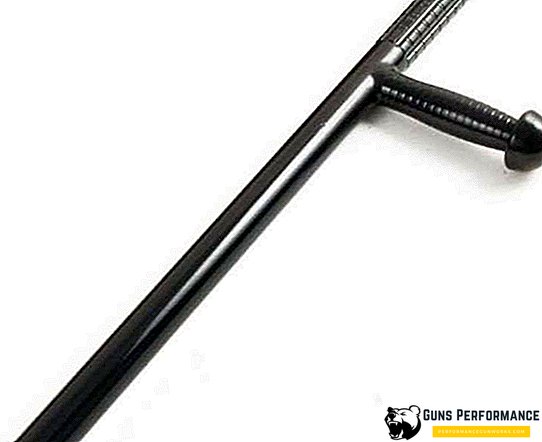
In 1971, a new police weapon appeared - a baton with a cross handle. It is still used by police officers from all over the world. This weapon is also the favorite weapon of any private security guard.
American Lon Anderson patented this baton and claimed that he had fought with a leg from a stool with a side bar as a child. Knowing that America in these years experienced a real boom in martial arts, one can easily guess that the new club is copying the well-known Japanese weapon - tonfa. American baton got the name PR-24 and was made of polycarbonate or aluminum.
In Russia, they use their own models of this baton, only this weapon is made of rubber. A flexible baton loses the properties that were laid when it was created, therefore the Russian tonfa is most often used as a simple club with a guard.
Batons - the main weapon of the guard
Security guards around the world use different types of batons. In addition to the most popular PR-24, the guard’s weapons are also such clubs:
- Telescopic baton (aka foldable baton);
- Spring club (different weight and less traumatic than telescopic baton);
- Baton stun gun (very popular lately, but rather has a psychological effect, because the shocker is not effective, and the bat itself is of unreliable construction);
- Lantern-club.
A foldable baton is one of the best options for a security guard. The sliding design makes the club compact and inconspicuous. Folding design allows you to apply the effect of surprise. When a baton suddenly appears in the guard’s hands, it makes a very strong impression on many violators.

If regular truncheons (such as PR-24) are recommended for full-time security, it is better to recommend retractable models for bodyguards or casino guards.
The best club for self defense
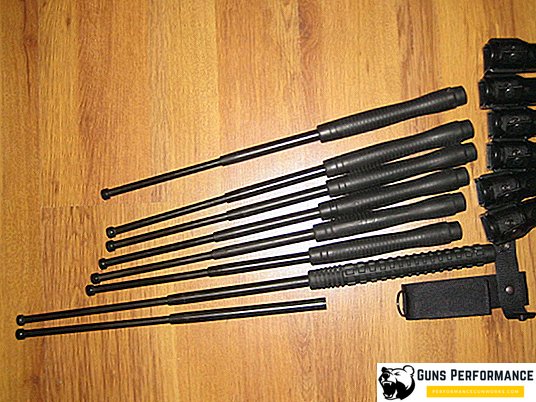
You shouldn’t believe the sellers of truncheons, who claim that you can own a baton on an intuitive level and this is even available to women and children. Any self-defense weapon is effective only after a course of training. It is not necessary to sign up for expensive self-defense courses. In order to effectively apply a foldable baton against an attacker, you need to:
- Watch the educational video showing the main blows with a baton. No need to learn complex combinations, it is enough to master a few blows to different trajectories;
- Work out the blows first in the air, and then on a solid target. The ideal target would be a pig carcass, but a dry tree will do. The blows must be struck with the bathead at the point you strictly intended;
- Learn to quickly remove a baton and bring it on alert. The club in the handbag will be overweight, as it is impossible to quickly get it in case of danger.
Carefully study the legislation on the excess of self-defense measures and remember that it is better to peacefully resolve any conflict than to receive a deadline for exceeding self-defense measures.
Flashlight-club - an effective weapon or advertising move manufacturers?
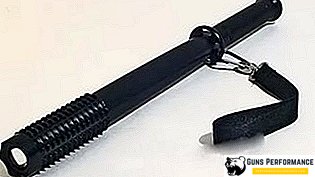
Recently, a flashlight is considered a very popular self-defense weapon. Sites are literally filled with various models, and the baton is positioned as an effective weapon that can not only be used as a flashlight, but also to deliver powerful blows. In fact, the flashlight will fall apart at the first bounce. If it is possible to neutralize an opponent with one blow, it is good, but sharp fragments of a broken baton can disfigure an opponent's face, which will lead him to terrible rage, therefore it is better to choose a reliable telescopic baton.
Batons Czech company "ESP"
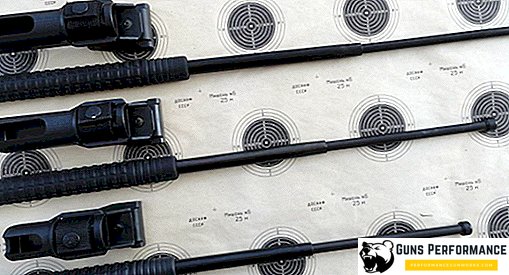
The batons of the Czech manufacturer "ESP" have proven themselves very well. Despite the rather high cost, they perfectly keep strikes even on brick walls. Many tests in the network dedicated to the products of "ESP" clearly demonstrate the superiority of folding batons "ESP" over their Chinese counterparts. The main difference with the baton "ESP" is the use of high-quality hardened steel.
If you decide to buy a club, choose high-quality and proven models. Do not buy Chinese fakes, because your safety is more expensive than a quality stick.


